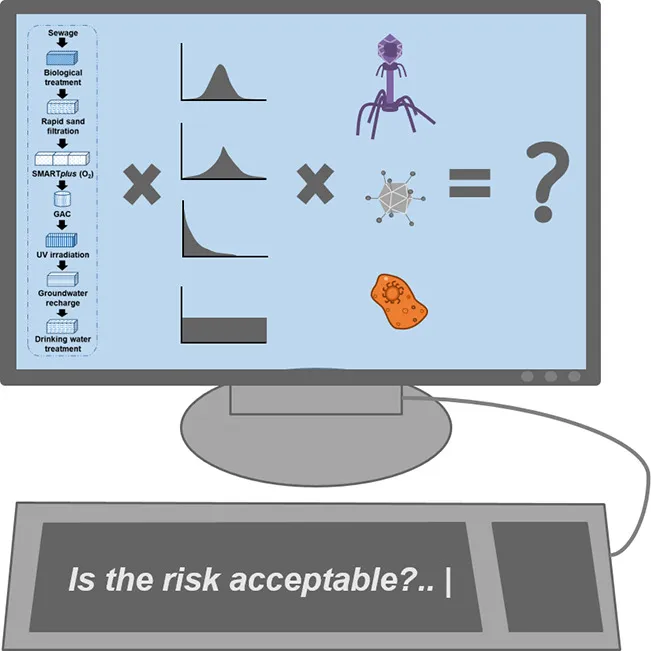Risk-based approaches are used to define performance standards for water and wastewater treatment to meet health-based targets and to ensure safe and reliable water quality for desired end use. In this study, a screening level QMRA for a non-membrane based indirect potable reuse (IPR) system utilizing the sequential managed aquifer recharge technology (SMART) concept was conducted. Ambient removals of norovirus, Campylobacter and Cryptosporidium in advanced water treatment (AWT) steps were combined in a probabilistic QMRA utilizing Bayesian networks constructed in Netica. Results revealed that all pathogens complied with disease burden at the 95th percentile, and according to the assumptions taken about pathogen removal, Cryptosporidium was the pathogen with the greatest risk. Through systematic sensitivity analysis, targeted scenario analysis, and backwards inferencing, critical control points for each pathogen were determined, demonstrating the usefulness of Bayesian networks as a diagnostic tool in quantifying risk of water reuse treatment scenarios.
